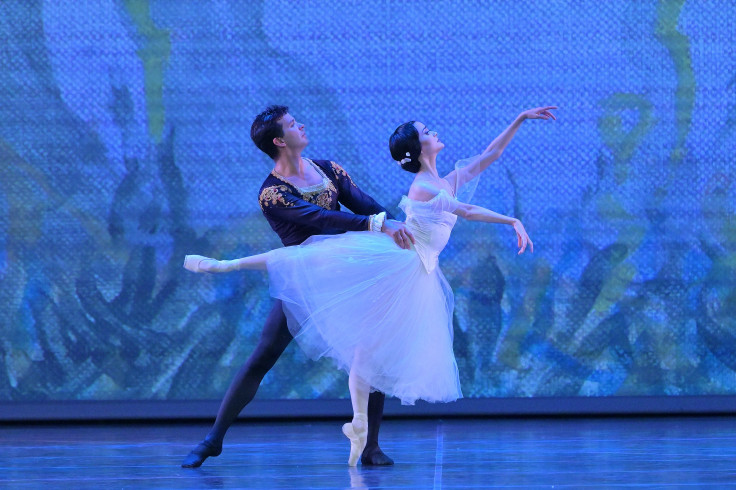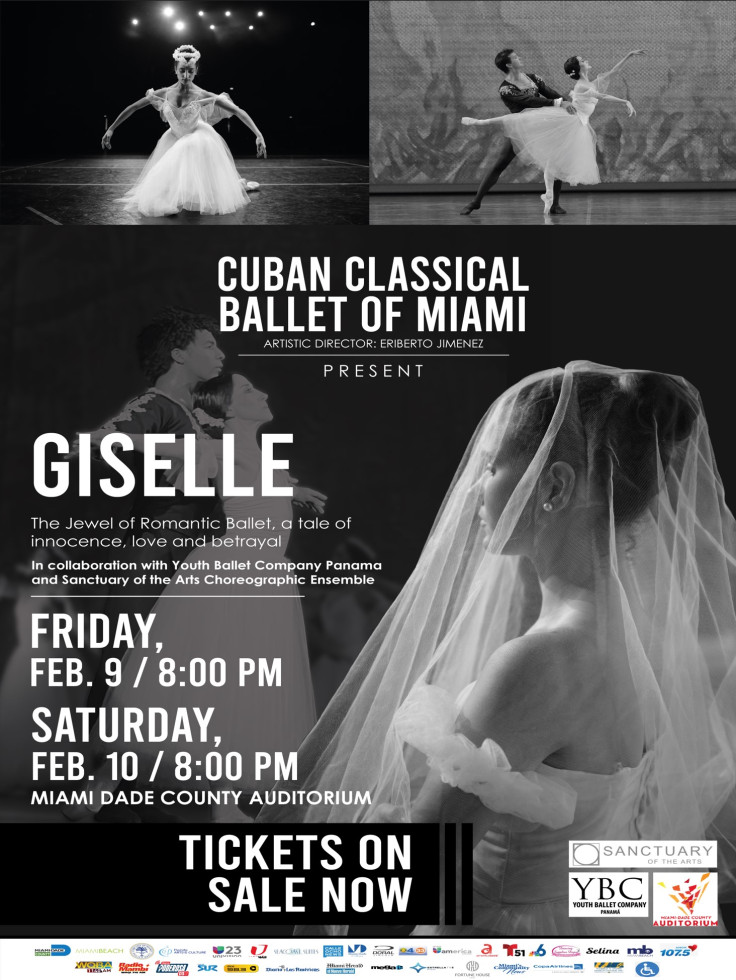
"Cuban ballet is important for Latino community to keep their history alive." The statement belongs to Miami Hispanic Cultural Arts Center' executive director, Eriberto Jiménez, and comes right before the premiere of Giselle by the Cuban Classical Ballet of Miami, in collaboration with the Youth Ballet Company Panamá.
Giselle will premiere on Friday, February 9th at 8:00 p.m. and Saturday, February 10th at 8:00 p.m./2024 at the Miami Dade County Auditorium, located at 2901 West Flagler Street.
"I believe Giselle is one of the best ballets ever written, choreographed, and composed. Musically and narratively, it resonates deeply with audiences as it explores themes of love and forgiveness, which are universally relatable emotions," Jimenez explained to The Latin Times.
The Cuban Classical Ballet of Miami had performed Giselle in its full length back in 2007, and now decided to stage it again in 2024, particularly in honor of St. Valentine's month.
Jimenez underscored that this is a "wonderful opportunity" to experience this beloved ballet, which holds a special place in the hearts of ballet enthusiasts alongside classics like Swan Lake, but also to appreciate the unique features of Cuban ballet methodology.
The Cuban Classical Ballet of Miami was founded in 2006 by Pedro Pablo Peña as a non-profit organization with the mission of promoting and preserving the tradition and legacy of Cuba's internationally renowned classical ballet school.
"At the moment there were a lot of Cuban dancers that were defecting, and he decided that maybe he should create a space where they could start performing, and to continue the legacy of the Cuban ballet outside of Cuba as well," Jimenez said.
-What specific characteristics make Cuban ballet unique?
-Cuba has the only methodology that has been on this side of the world for the past 60 years. Cuba has done great with this methodology. They produce the best dancers in the world. The difference between most of the schools of ballet, for example, the Russian style of the French style, the Italian or the English, is that in Cuba ballet was accommodated to Latin American bodies.
So they took the Russian methodology and arranged it for the Latin body, which produces more muscles. So Cuban methodology has little changes on arms and heads. You don't use the head. In Russian style you tend to use the more exaggerated head. In Cuban, everything is a little more precise, because the less you move your upper body, the stronger your center is. And that's why Cuban dancers can perform better or jump more.

-What is the impact of the Cuban Classical Ballet today in Miami?
-Miami is like a second home to Cubans. So that's why we try to keep these here in Miami and the audience from Cuba, they love ballet. They grew up knowing ballet. We try to keep that here in Miami, and the support is important, because we still don't have the budget to have a permanent company. We're still working on that, but we are the only professional ballet company here in Miami that it's working the Cuban style, and Cuban ballet is important for Latino community to keep their history alive.
-How makes you feel as a Latino in Miami to continue this heritage and make this contribution to your community?
-Well, I am Colombian, so I was just lucky to be here. I was trained by Cubans in the Cuban methodology. The Miami Hispanic Cultural Center, which is the home for the Cuban ballet, is an organization that hosts three other organizations. We are the house of the International Ballet Festival of Miami, the Cuban Classical Ballet of Miami, and the Creation Art Center (CAC) three organizations that are dedicated to the arts in Miami. We don't only do ballet, we also do theater plays, literary events, our exhibits, music lessons, we have a ballet school. So there's so many other things we give, and I think it is important because we're trying to preserve the Hispanic culture alive here in the United States.
About "Giselle"
"Giselle," premiered in Paris on June 28, 1841, is the masterpiece of the romantic ballet style, characterized by its subtlety, ethereality, and femininity. Choreographed by Jean Coralli and Jules Perrot, with music by Adolphe Adam and the storyline by Theophile Gautier, "Giselle" tells the story of a simple and innocent peasant girl with delicate health who falls deeply in love with Albrecht, a duke disguised as a villager.
Hilarion, a young peasant in love with Giselle, discovers the deception and reveals that Albrecht is a nobleman engaged to Bathilde. Giselle, devastated by the revelation, goes mad and dies of heartbreak. Her death transforms her into a "Wili," a kind of ghostly spirit of young women who die before marriage, and according to the Willis' law, any man who approaches these pure souls must die.
However, repentant, Albrecht visits Giselle's grave and begs for forgiveness for his deceit. Deeply in love, Giselle forgives Albrecht and allows him to return to the real world, thus demonstrating the intensity and eternity of her love.
© 2024 Latin Times. All rights reserved. Do not reproduce without permission.







